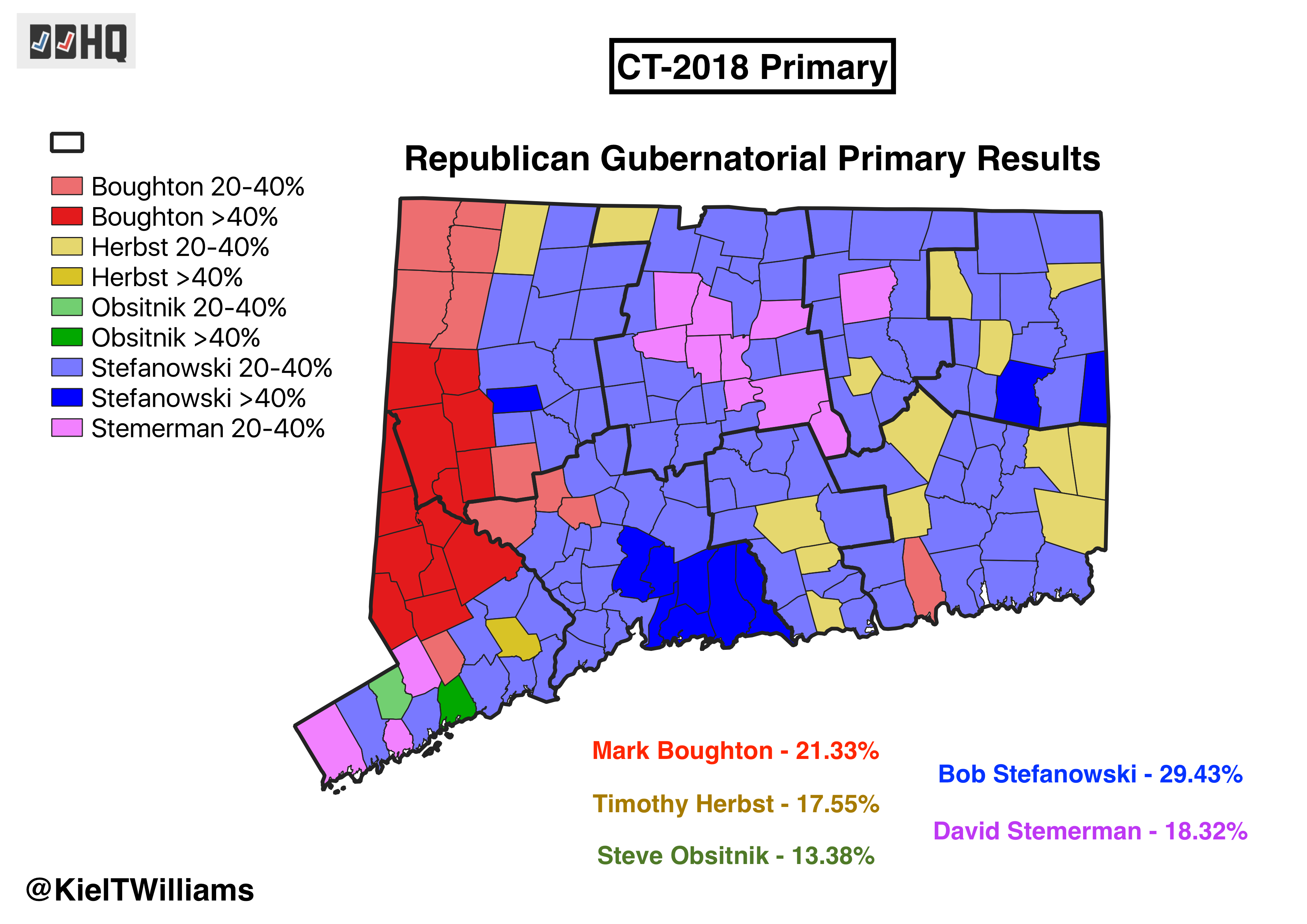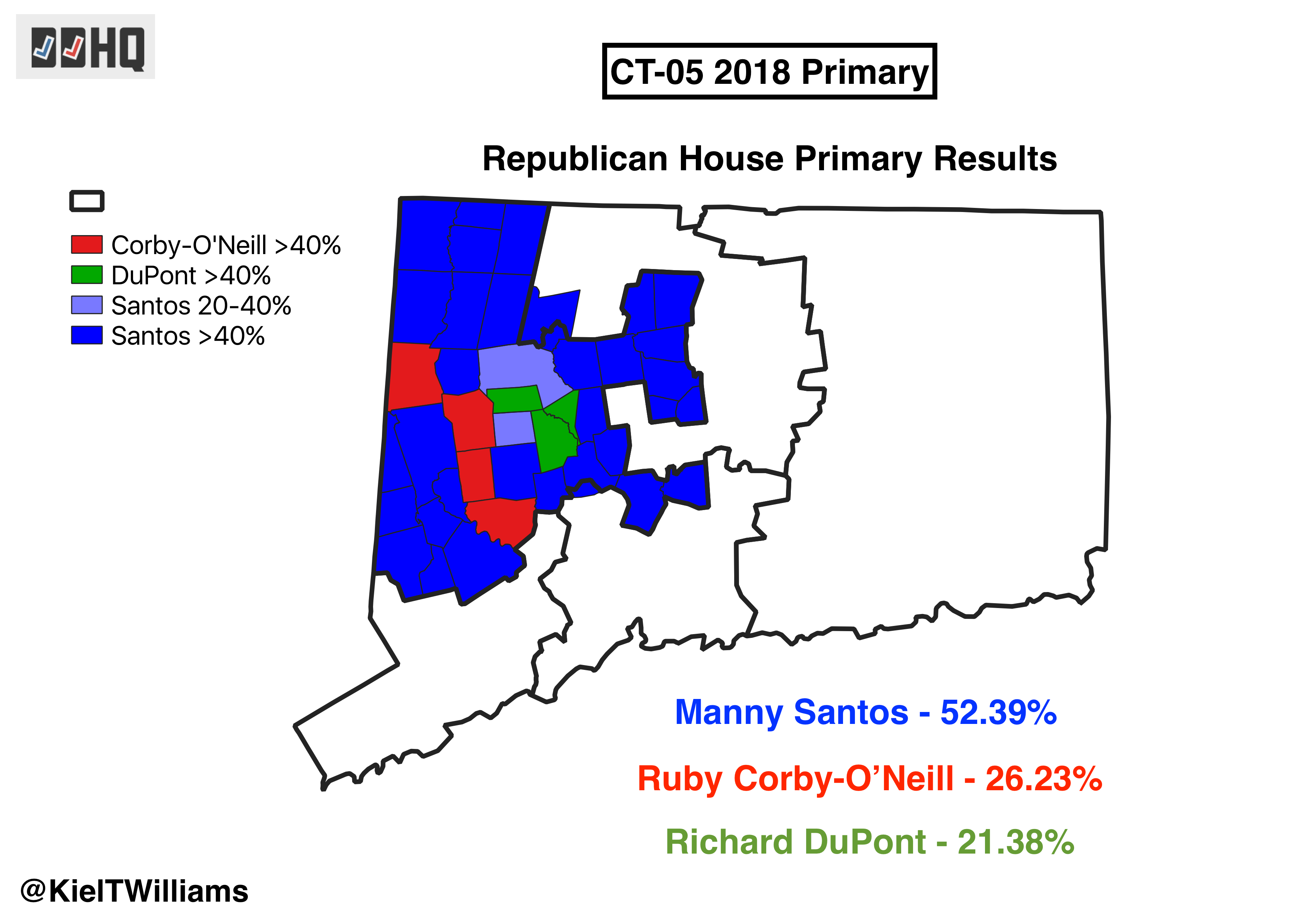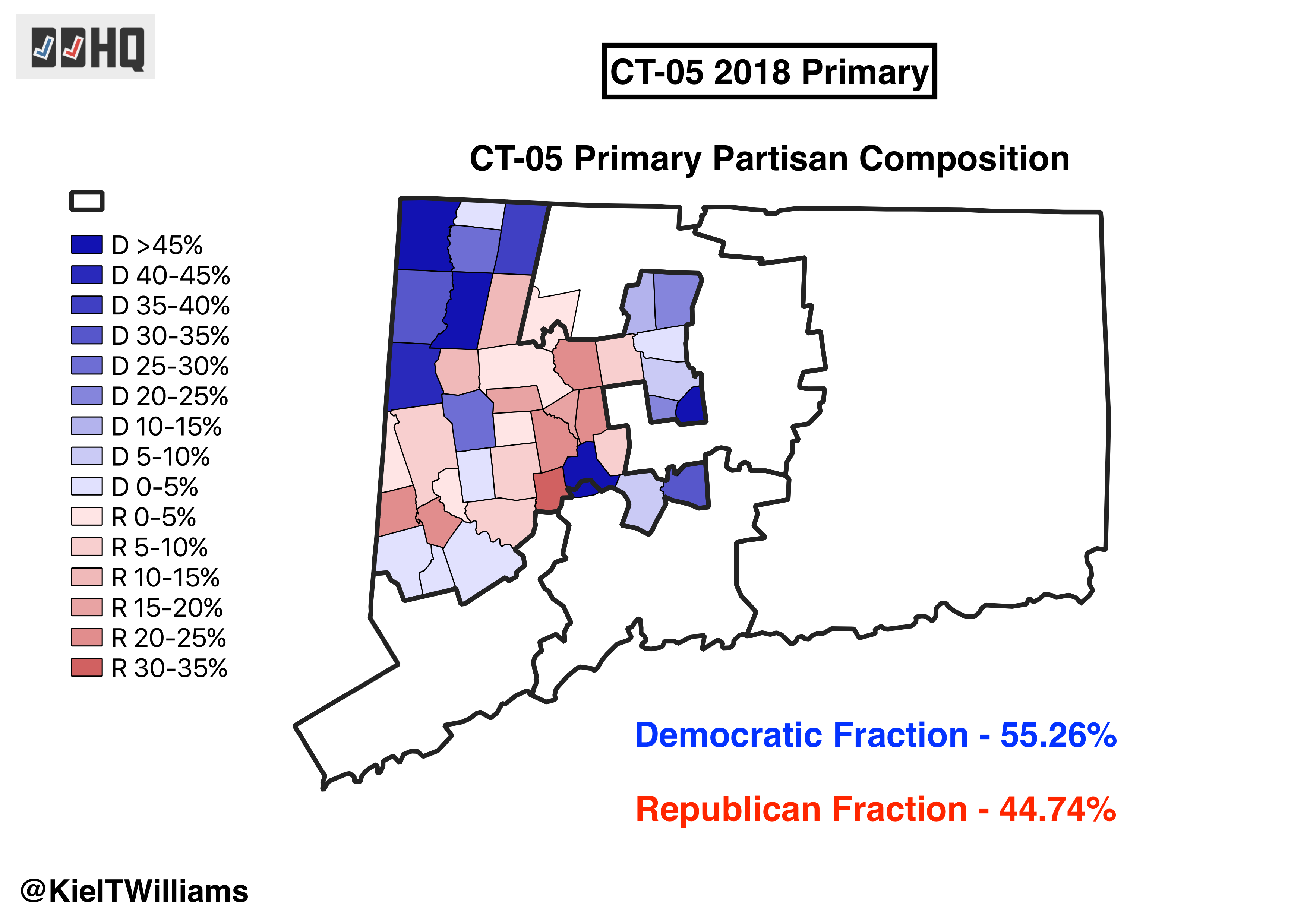Tuesday night’s Connecticut primary contests saw the nomination of candidates for two particularly notable races. First, incumbent Connecticut governor Dan Malloy is not seeking reelection in November. In the wake of chronic fiscal problems, Malloy has become toxically unpopular in the state. As a result, Republicans sensed an opportunity to seize the governor’s mansion, despite Connecticut’s strong Democratic leanings. Connecticut has expressed openness to Republican governors in the recent past – each of Dan Malloy’s two victories over Republican Tom Foley was narrow, and Malloy himself succeeded Republican governor Jodi Rell.

The result of the Democratic gubernatorial primary was never in real doubt. Ned Lamont was famously the 2006 Democratic nominee for Senate in Connecticut, defeating incumbent Joe Lieberman in the primary. Lamont went on to lose to Lieberman in the general election, after Lieberman chose to run as an independent. Lamont retains substantial name-ID in the state, and never attracted a top-tier challenger, instead clearing what had been a crowded field. He cruised to victory, defeating Bridgeport Mayor – and convicted felon – Joe Ganim by over 60 points.

The Republican gubernatorial primary was much more closely fought. It was ultimately won with a narrow plurality by Bob Stefanowski, a wealthy General Electric executive and first-time candidate. This was seen as an upset victory against Danbury Mayor Mark Boughton, who had received the formal endorsement of the Connecticut Republican Party. Stefanowski won by winning large margins in the southern region of the state, particularly around New Haven. Boughton’s strength in the western portion of the state – around Danbury – wasn’t enough to save him.

The overall partisan composition of the primary can bring only cold comfort to the Connecticut GOP. Despite Malloy’s deep unpopularity in the state, Democrats outperformed Republicans in ballots-pulled by nearly 20 points. In the current national environment, this race begins as a toss-up – at best – for Stefanowski.
The other notable primary in Connecticut on Tuesday was for their 5th Congressional district. Democrats currently control Connecticut’s entire Congressional delegation, and this D+2 open House seat is the Republican Party’s best chance to break that deadlock. This is especially true under the current circumstances: incumbent Elizabeth Esty was forced to step aside, after facing criticism for her poor handling of harassment allegations made against her chief of staff.

The Democratic nominee for CT-05 will be Jahana Hayes, a first-time candidate and award-winning teacher. She soundly defeated Mary Glassman, a First Selectman for Simsbury. Glassman’s support was confined to the area around Simsbury, while Hayes carried the rest of the district.

Finally, the GOP primary for CT-05 was won convincingly by Manny Santos, the former Mayor of Meriden. He defeated Ruby Corby-O’Neill, a college professor, and Richard DuPont, a local businessman.

While this seat appears competitive on paper, the partisan break-down of the primary again leaves the GOP with little to be optimistic about. Democrats led Republicans in ballots-pulled by nearly 11 points. With Esty leaving, this is the sort of seat that might be competitive in a year like 2010 (or if Hillary Clinton were President). But with Trump in the White House – and Congressional Republicans facing strong headwinds – this seat appears unlikely to flip. The Øptimus legislative model currently gives Democrats more than an 85% chance of retaining control. If that happens, Jahana Hayes will become the first black woman to represent Connecticut in Congress.